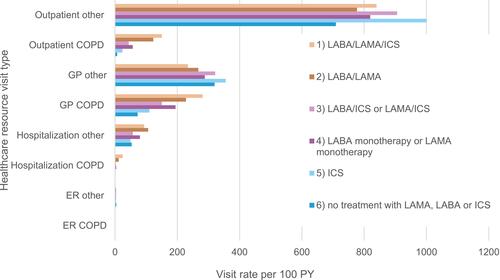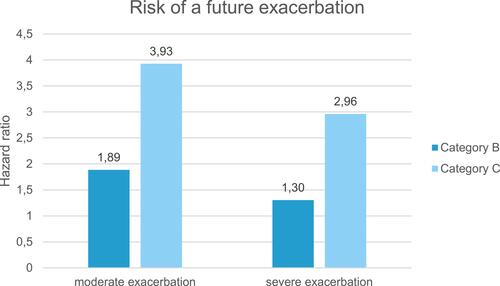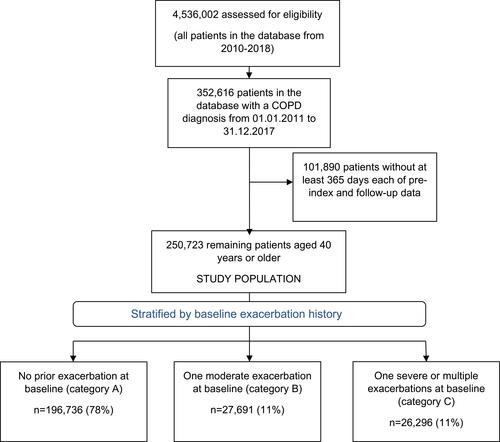Figures & data
Table 1 Baseline Demographic Information, Follow-Up Time, and Baseline Exacerbations
Figure 2 Healthcare resource utilization visit rate by baseline treatment group and visit type and reason, per 100 PY.

Figure 3 Cumulative incidence of a subsequent exacerbation, adjusted for competing risk of death, by time since index date. (A) No exacerbations at baseline, (B) one moderate exacerbation, (C) one severe or multiple (regardless of severity) exacerbation at baseline. 95% CI available in Supplemental Material Table S4.

Figure 4 Mean cumulative count (MCC) of a subsequent exacerbation in the overall disease population, by time since index date, adjusted for competing risk of death. (A) No exacerbations at baseline, (B) one moderate exacerbation, (C) one severe or multiple (regardless of severity) exacerbation at baseline. 95% CI available in Supplemental Material Table S5.

Figure 5 Risk of a future exacerbation compared to category A (reference) during follow-up by baseline exacerbation category. (B) One moderate exacerbation, and (C) one severe or multiple (regardless of severity) exacerbation at baseline. 95% CI available in Supplemental Material Table S7.

Table 2 Healthcare Resource Utilization Visit Rate During Follow-Up by Visit Type and Reason, per 100 PY. (A) No Exacerbations at Baseline, (B) One Moderate Exacerbation, (C) One Severe or Multiple (Regardless of Severity) Exacerbation at Baseline

